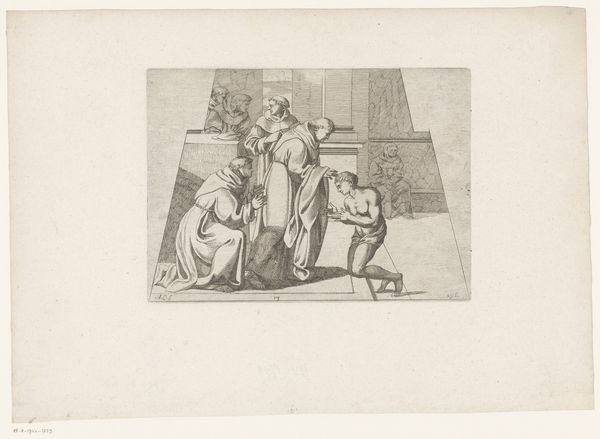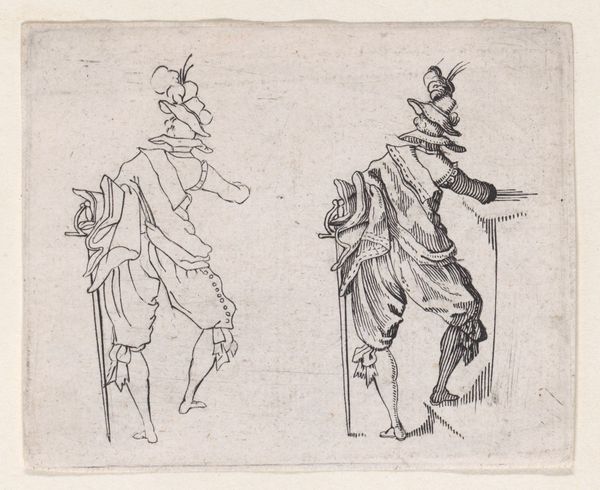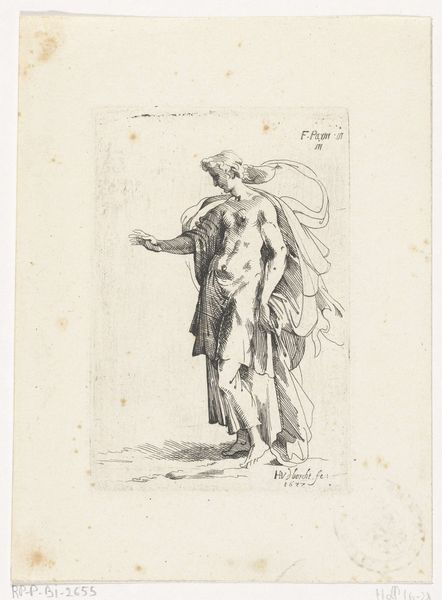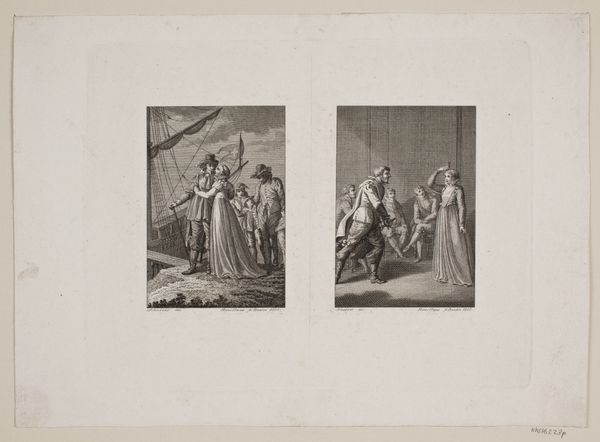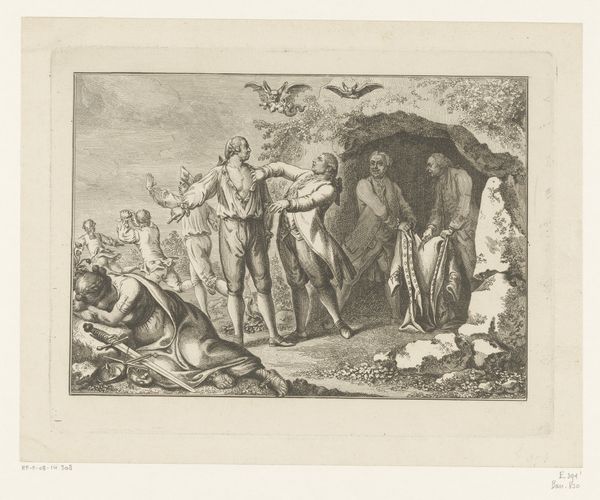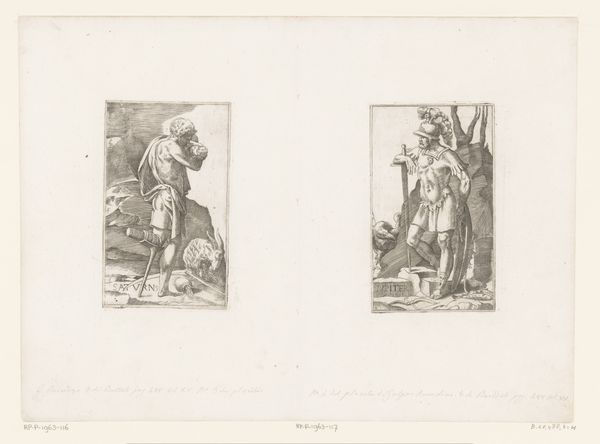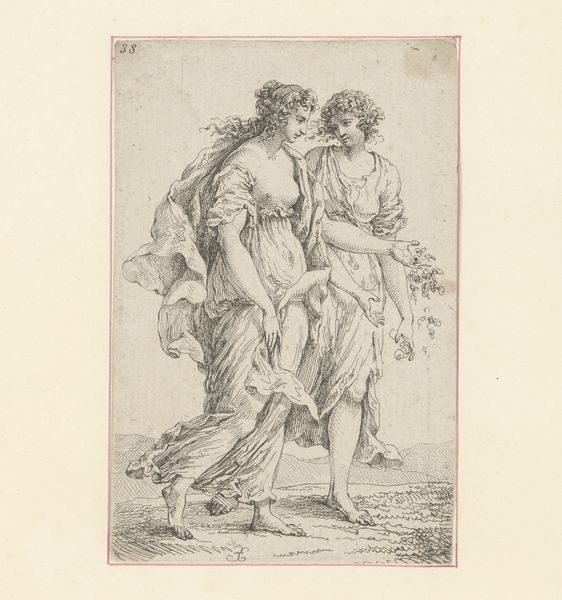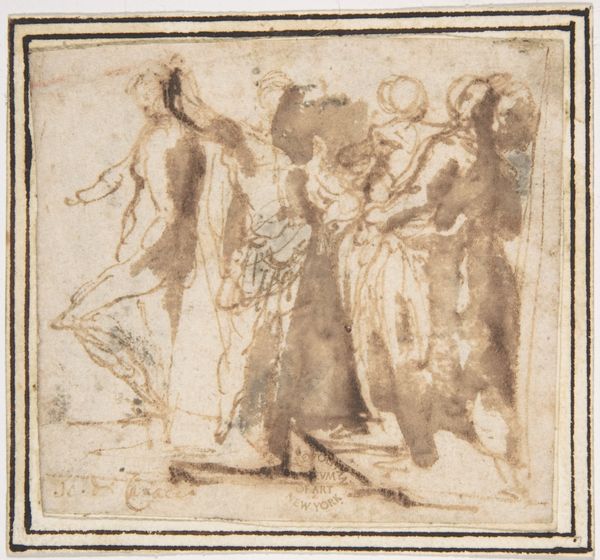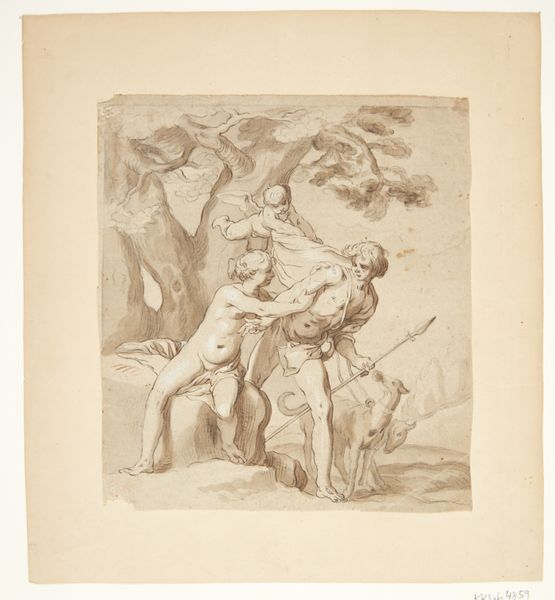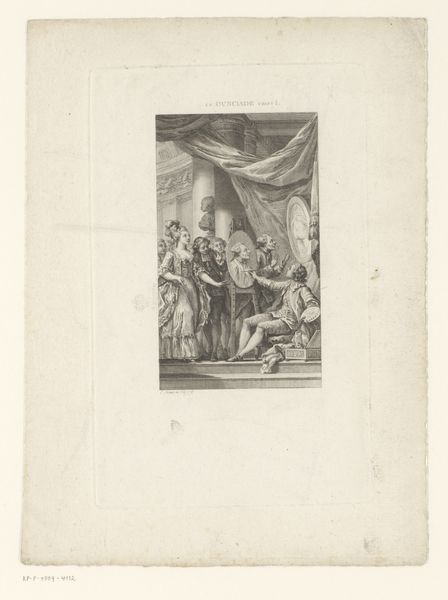
drawing, paper, ink
#
drawing
#
baroque
#
figuration
#
paper
#
ink
#
genre-painting
Dimensions: height 138 mm, width 167 mm
Copyright: Rijks Museum: Open Domain
Curator: Here we have Frederick Bloemaert's drawing, "Maria en Jozef," created sometime after 1624. It's ink on paper, and typical of the Baroque style. Editor: My initial reaction? It feels stark, almost austere. The limited use of ink emphasizes line work, making the figures appear almost sculptural. There's a strong emphasis on the tactile quality of their drapery. Curator: Interesting point about austerity. Bloemaert was working during a period of significant religious and social upheaval. Genre paintings like these gained popularity not just for their aesthetic value, but as a reflection of everyday life and religious values accessible to a wider audience. How might the materials, the ink and paper, speak to that accessibility? Editor: Well, ink as a medium allowed for reproduction. We are not talking precious pigments or canvas. The drawings would be easily reproduced as prints allowing Bloemaert to participate in a kind of democratization of images. I see the handmade quality too in how the artist has built tone by hatching and cross-hatching. There's a directness, an economy, reflecting perhaps the material conditions of the time. Curator: Indeed. And we shouldn't overlook the iconographic significance. Bloemaert depicts Mary and Joseph in separate panels, in quite humble poses. How do you see the social context reflected in their portrayal? Editor: There's a vulnerability there, isn’t it? Not the idealized Madonna and strong patriarch we see in other representations, but two ordinary people burdened with something extraordinary. The materials, again, enhance this sense of humbleness; this drawing doesn’t glorify them, it captures a raw, almost anxious moment. Look at how Mary pulls her clothes around her body and look at Joseph burdened by the walking stick in his hands. Curator: I agree, and it’s important to consider who these images were made for. In the wake of the Reformation, images played a key role in both Catholic and Protestant religious practice. Did these images reaffirm belief and identity, or simply serve to perpetuate the existing social order? The market in which it existed dictated a lot of what this imagery communicated. Editor: And yet, even within that complex market, Bloemaert's focus on materiality reveals a fascination with process and production. These weren't just devotional aids, but objects crafted with deliberate skill, reflecting both artistic intention and social conditions. I keep returning to the lines. There is real human vulnerability and effort here. Curator: Precisely, this close look really opens a window onto a complex moment in art and culture history. Editor: Yes, looking through a material lens highlights how the convergence of faith and economics really influenced the making and interpretation of art.
Comments
No comments
Be the first to comment and join the conversation on the ultimate creative platform.
